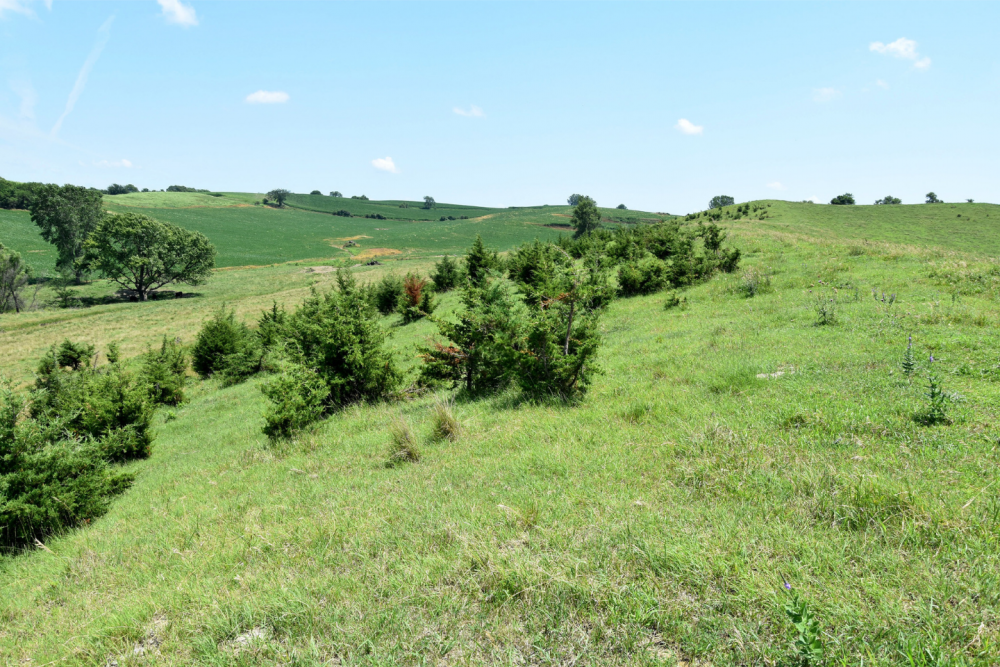
Space Invaders is a standards-aligned, 5-E life science unit teaching about the ecology, evolution, and effects of invasive species as it applies to both natural and agricultural ecosystems.
Overview
Numerous hands-on, minds-on activities will get students out of their seats to explore a variety of evolution and ecosystem concepts including natural selection, selection pressure, adaptation, evolution, predation, biological control, and invasive species management. Students will examine how factors such as environment, reproductive capacity, and seed dispersal play key roles in an invasive plant species’ success by playing the tabletop game, “Space Invaders”.
Lesson 1 | What is an Invasive Species?
- This lesson introduces the concept of an invasive species. Students will create a profile for an invasive species in their area to gain an understanding of the diversity of organisms that can become invasive, where to go for trusted information, how humans may be involved in their introduction and spread, and which native species or resources are threatened.
Lesson 2 | Adaptive Traits
- This lesson uses invasive species to teach about the role of selection pressure and adaptive traits in evolution of a population. Students will play an invasive species game, Space Invaders, to better understand adaptive traits of invasive plants in a new environment. Three types of adaptations are introduced: morphological, physiological, and behavioral. Students will identify these three types of adaptations in an invasive fish species. Students will develop a Super Competitor to illustrate their understanding of adaptive traits.
Lesson 3 | Natural Selection and Evolution
- This lesson uses a live-action predation simulation to illustrate natural selection and evolution of an invasive Chinese Mystery snail population. A reflection activity will allow students to think about the impact of biotic and abiotic changes in environment. Students will learn about the components necessary for natural selection to occur and identify these elements in an example animation.
Lesson 4 | Controlling Invasive Species
- This lesson introduces the invasive species, Eastern Red Cedar trees, and provides students with the opportunity to explore control methods for this organism. Students will calculate the cost of the invasion and of various control options. Students will use these calculations to evaluate and select an appropriate control method and provide evidence for its selection. Students will discuss how control methods can affect evolution of an invasive population by applying selection pressure.
Lesson 5 | Biological Control of Invasive Species
- This lesson focuses on biological control as a potential solution for managing invasive species. Students will learn what biological control is and how it can be applied to various pest control situations. Students will read about successful and detrimental application of biological control against an invasive species. Students will learn about the regulatory process in place to limit unintended consequences and the state and federal agencies involved in overseeing the release of a biological control agent. Finally, students will use what they learn to design a successful biological control for a local invasive species that has limited unintended consequences.
Curriculum Connections
Next Generation Science Standards
- HS-LS4-4 Construct an explanation based on evidence for how natural selection leads to adaptation of populations.
- HS-LS4-5 - Evaluate the evidence supporting claims that changes in environmental conditions may result in: (1) increases in the number of individuals of some species, (2) the emergence of new species over time, and (3) the extinction of other species.
- HS-LS2-7. Design, evaluate, and refine a solution for reducing the impacts of human activities on the environment and biodiversity.
- Student Resources (Word Doc) (3.84 MB)
- Student Resources (PDF) (298.48 KB)
- Teacher Resources (Word Doc) (7.3 MB)
- Teacher Resources (PDF) (887.1 KB)
- What is an Invasive Species - Lesson 1 Presentation (PPT) (287.12 KB)
- Adaptive Traits - Lesson 2 Presentation (PPT) (1.52 MB)
- Natural Selection and Evolution - Lesson 3 Presentation (PPT) (6.78 MB)
- Controlling Invasive Species - Lesson 4 Presentation (PPT) (4.19 MB)
- Biocontrol of Invasive Species - Lesson 5 Presentation (PPT) (971.04 KB)